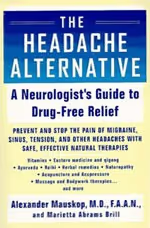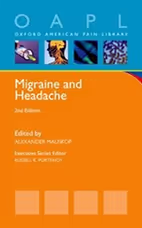Book Reviews
Review of The End of Migraines: 150 Ways to Stop Your Pain
Published in Headache: The Journal of Head and Face Pain — 24 May 2021
Sooner or later someone in our field will do a “book” like this one. Whom is better than this author who has a unique approach to headache therapies and a very comprehensive and wide-ranging experience, over decades, of practicing neurology and treating numerous people with headache disorders? Although titled, “The End of Migraines: 150 Ways to Stop Your Pain!” the author quickly notes that there is no cure for migraine, but with the use of many things he describes as the ways to manage migraine, many people with migraine should be able to reduce the frequency and severity of their symptoms significantly. He also indicates early in the book that he has had migraine for decades and shares his experiences with what works and does not work for him.
This “book” appears to have largely been born out of his blog from the New York Headache Center. For years, he has regularly put up information, scientific and clinical, for his headache followers. He has created this “book,” actually an e-book, which takes relevant information from his experience and knowledge of migraine. There is no need for an index and chapter references. He uses hyperlinks, embedded in the e-book, to connect to material online, which he puts in context for the reader. This works very well as one hyperlink may go to an original paper or publication or a resource site.
He links to major medical journals including headache journals and his own publications, when helpful, as well as nonmedical literature and other sites. This format allows the e-book to be updated from time to time, which is easy to do with this approach.
The book has a very interesting introduction and deals with evidence-based medicine and its role in migraine therapy. When he begins the section on 150+ treatments, he starts with a very interesting comment. Many of the treatment ideas that I describe in this book are not just off-label (that is, not approved by the FDA) but may appear to be off-the-wall. It is refreshing to hear such intellectual honesty from a practicing neurologist.
There is a great section on supplements and finding someone to help with your migraine, such as coach, a partner, or a sympathetic friend. A diagnostic discussion follows and is most helpful, as proper diagnosis directs treatment, as are the detailed sections on triggers including environment, food, exercise, physical therapies, and sleep. Herbal therapies are covered as is neuromodulation and injections/blocks among others.
In the sections on drugs, he deals with acute therapies and the modern use of triptans and gepants, and a ditan. Preventive therapies start with monoclonal calcitonin gene-related peptide antibodies, tricyclic medications, and many other preventive therapies including beta blockers, anti-seizure drugs, nonsteroidal anti-inflammatory drugs, and botulinum injections. From acupuncture to Feldenkrais methods, he covers the contemporary plethora of migraine “treatments” as he sees it in practice.
He ranks all medications on a 1 to 10 scale regarding his own subjective opinions of the utility of each treatment. He indicates that no treatment gets 10 as a score and any receiving a score of 1 were not rated. He also lists his favorite migraine therapies separately. He includes a lot of data links here, from single case reports to full-scale randomized clinical trials, and detailed reviews. His clinical acumen shines through the volume and one gets the impression that this is a very personal view at times, not always backed by evidence, as there may not be any, but by experience, practice and pragmatism. He carefully notes the general things to be careful of in taking some treatments and warns if there are serious concerns. Nonetheless, he indicates clearly that the advice of a medical professional should be sought before trying the therapies mentioned.
Diagnosing secondary headache that can mimic migraine or vice versa is a useful section but does not go into depth about the disorders/diseases mentioned, as this is not the intention of the book. Special circumstances are given sections including menstrual migraine, pregnancy, resistant/refractory headache, aura and headache, and many others.
The author is a senior, highly experienced neurologist and has a high degree of interest in migraine and other headache disorders. He has a sense of curiosity about the brain and migraine and that comes through to the reader of this small volume. I count 23 endorsements, including the excellent foreward of the book from a wide range of well-known people, which includes two prior editors of this journal. He is well liked and highly respected by his colleagues.
In many ways, this book does what online databases on diseases cannot do most times. He tells the reader what he knows and how to use that knowledge. He directs the novice and experts to the right literature and takes the reader on a personal journey through the field of migraine treatments. He tells people, “…keep seeking relief, not to give up on or blame yourself for the pain you experience from migraine.”
There is a printed version of the book; however, the e-book is ideal for the intended purpose. I would recommend it the first instance. It is available via a commercial site and inexpensive.
I would recommend this book to anyone who has migraine or cares for people with migraine and wants a broad and sometimes detailed overview of the treatments. Available in the e-book format, it represents a lot of work for one person, but his passion, occasional humor, and historical perspectives are evident in this work. You don’t have to agree or accept everything the author says to enjoy and benefit from this “book,” and I know he would want people to be critical and skeptical where warranted. However, you will find more than you would usually need to know from this banquet of 150 ways to help your migraines! Enjoy, I did very much. Read it through once and save as reference.
Allan Purdy MD, FRCPC, FAHS
Read Full Review
Read Full Review
.jpg)


